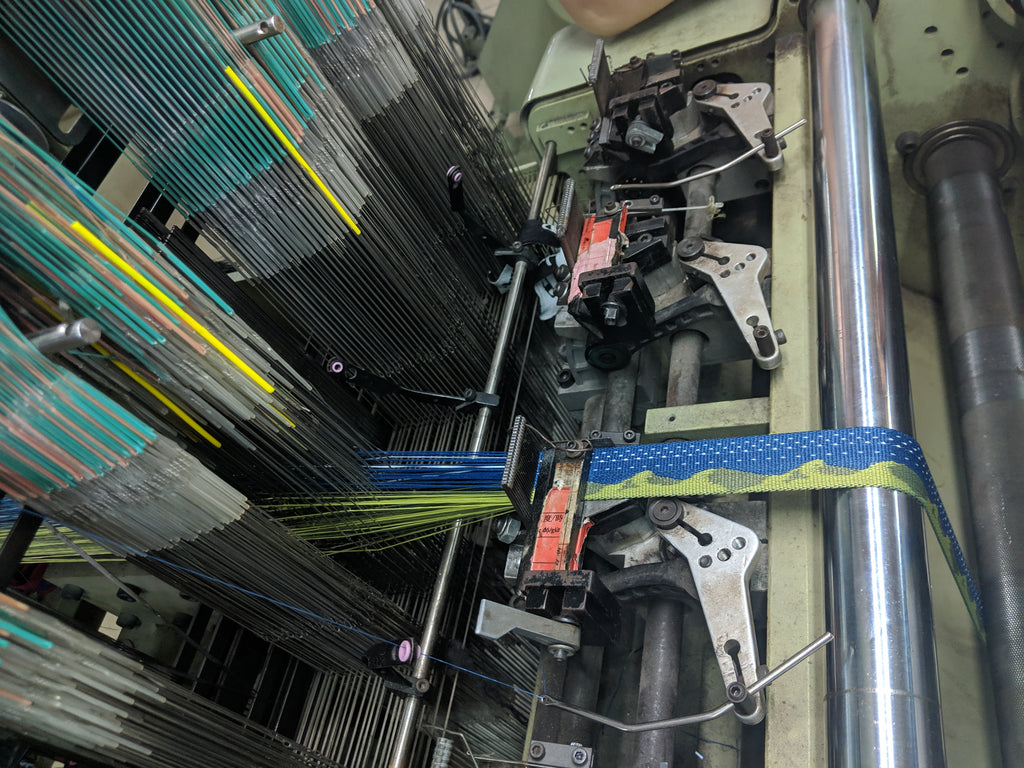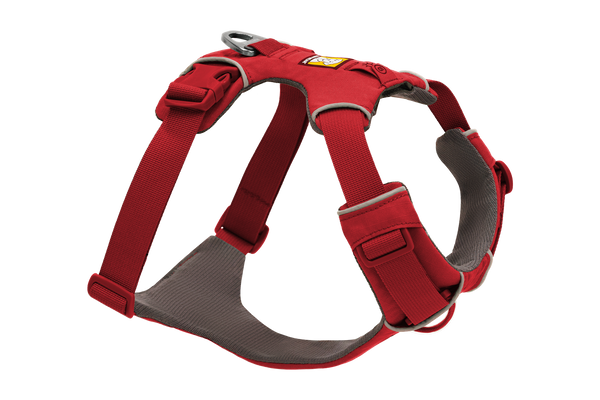Threads of Innovation: How Our Reflective Webbing Is Made
Curiosity led Ruffwear product designer Monica down a path of discovering a way to weave reflectivity into jacquard webbing. The result: reflective leashes and collars in striking and durable patterns.
Before we dive into the new patterns for the season, you may be wondering – what’s jacquard webbing?
Jacquard webbing is created using a special loom process. It’s a complicated process that involves special machinery and special mastery by the workers crafting the webbing. It’s more time consuming and labor-intensive than a basic weave, but the benefits of jacquard webbing lend well to the needs of our collars and webbing.
Because the design is integrated into the webbing rather than printed on it, it won’t fade or rub off. And with dogs, abrasion is definitely a thing. Plus, the designs can be more complex – which is useful when trying to depict some of our favorite landscapes and natural elements.

It's appealing to have reflective thread integrated into the webbing – again, because it's more durable than having it printed on the webbing. But introducing reflectivity to an already complicated process meant we were told “no” by many manufacturers when we first set down that path.
In a typical jacquard weave, it uses the same thread type, so it all kind of marches together. The machine needs to be at a specific tension setting depending on what type of thread it is using. Two different thread types (e.g. reflective and non-reflective) means two different tension settings, and that’s what makes it super tricky.
We worked with our partners to figure out the settings to make it work, but they still have to run the machines slower than they usually do, monitoring the status of the threads to make sure that nothing breaks – or, inversely, is not tight enough which would pose a durability risk.
With a new world of possibility opened up, Monica began developing the new patterns and incorporating hits of reflectivity into the design. Her inspiration? Looking at the different ways light naturally occurs in and plays with our favorite landscapes.
From there, she translates rough sketches and ideas into a blank graphic that has cells to represent every pick (on the face of a webbing, each crosswise or weave is one pick ) in a section of webbing. Here’s a look at the process for one of the new prints, Sunset.

There are countless other things that go on behind the scenes as Monicadevelops a pattern and brings it to its final formthat you see in your dog's collar or leash. But we'd really have toget down inthe weeds (or weaves) for that.
Now you know a little more about where we started and how we got here, let's take a closer look at the new patterns for the Crag Collar and Crag Leash – and the inspiration behind them.

SEAFOAM
Inspired by glowing bioluminescent phytoplankton found in the tidal wash along Pacific Northwest coastlines.

SUNSET
Inspired by the shifting light and hues as the sun dips behind the Three Sisters – the iconic mountainscape in our backyard.

GREEN HILLS
Inspired by stars appearing in the dark skies above the rolling terrain of the Appalachian Mountains.



















